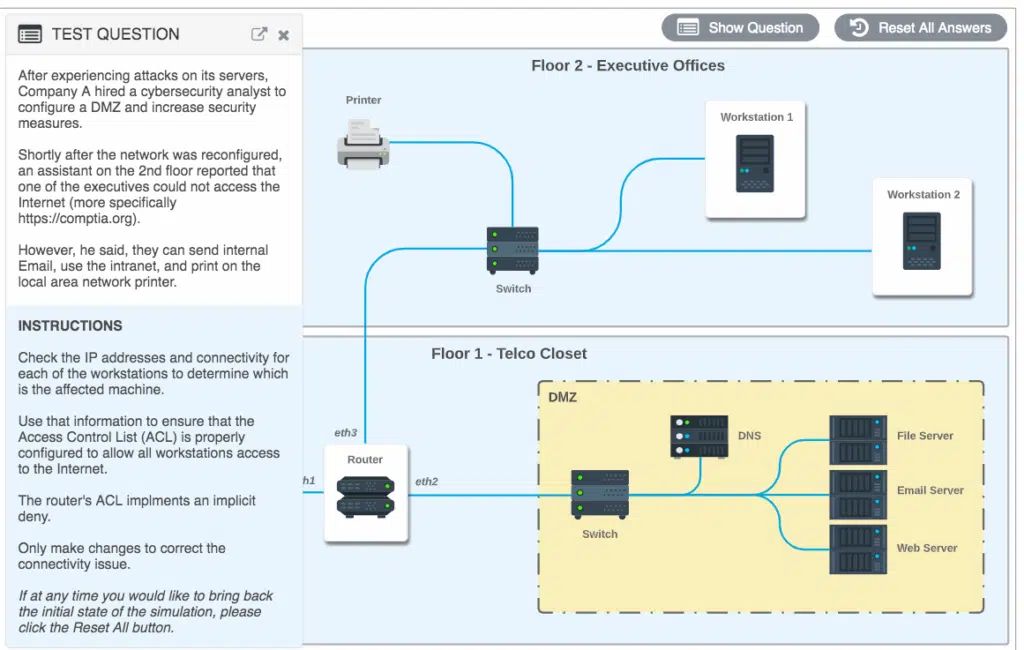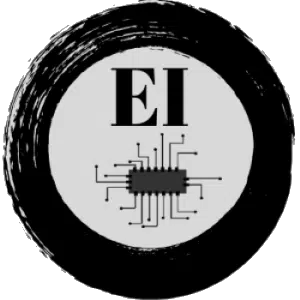While I was preparing for my CompTIA Network+ certification, I found myself googling for reliable information about the exam, in terms of how many questions will be there, what will be the type of questions asked, what will be the grading system and passing score but I was unable to find this info. I just gave my certification test so I thought I would share this info with you guys along with tips on how to actually answer different types of these questions.
Exam Format
- Number of questions: 90
- Grading scale: 100 to 900
- Passing score: 720
- Types of questions: Multiple Choice Questions (MCQ), drag and drops and performance-based.
Let’s take a look at each of these in detail and see some of the tips to answer these questions, along with useful links to get some official sample questions.
This is a screenshot taken from the CompTIA website
Number of questions: 90
As you can see, there will be a maximum of 90 questions, but according to exam takers, this number can vary between 75 to 90. But keep in mind that less number of questions might not always be easier. Yes, it will consume less time to answer the questions, but at the same time, CompTIA makes sure that the difficulty of the exam stays the same no matter the number of questions presented. So, for example, you might be able to get a better score by taking 90 easy questions rather than 75 difficult ones!
These 75 to 90 questions are divided into 2 groups as mentioned above
- Multiple choice questions (MCQ) and
- Performance-based questions (PBQ)
Among these 2, the majority of the questions will be Multiple choice ones. For example, let’s say you get 90 questions in your exam, then around 87 to 88 will be MCQs. Only remaining 2 or 3 will come from the PBQ type.
Let’s have a look at each of these in detail.
Multiple Choice Questions
These questions can come in 2 variants.
- Situation based or
- Simple straight forward questions
Straight forward questions
These questions are direct in nature. They are designed just to test your knowledge regarding the technologies covered in the CompTIA’s objectives.
For example, let’s have a look at this question.
What protocol is used to log in securely to the terminal of a remote machine?
- Telnet
- TCP
- UDP
- SSH
Correct Answer: D. SSH
As long as you are familiar with the technology you will be able to answer these questions fairly easily. We will look at some tips and strategies to answer these questions later, let’s now take a look at situation based questions.
Situation-Based Questions
These questions are based on real-world situations and they test your ability to analyze and react to real work networking problems. But this question essentially boils down to a straight forward question.
For example, let’s have a look at this question.
Tom is trying to access the secure terminal of the server running on Jim’s computer over SSH. Jim’s IP is 192.168.0.10 and he has SSH enabled on his server. Tom is trying to connect to it at port 25 at 192.168.0.10 but he is unable to do so, but he can ping his IP successfully. What could be the possible reason?
- Tom is not connected to the network
- Port number incorrect
- Protocol incorrect
- IP incorrect
Answer B: SSH runs on port 22, not 25
Tips to Solve Multiple Choice Questions
Tip#1: Simplifying the question to its base form:
This situation-based question, in the end, boils down to a simple straight forward question. For example, the question above can be restated as
What port and protocol to use to login to a secure terminal of a remote machine?
Thus, in the end, its a test of problem-solving skill and knowledge.
Let’s look at some of the tips to solve these questions.
Let’s have another look at the options of the situation based MCQ again.
- Tom is not connected to the network
- Port number incorrect
- Protocol incorrect
- IP incorrect
Tip#2: Process of elimination:
Here instead of focussing on which answer is correct, let’s have an independent look at each option to see which ones are definitely incorrect using the details/clues given in the question.
Option A: The question says Tom can ping Jim’s computer and he cannot do that if he is not connected to the network so it is incorrect.
Option B: If you don’t remember the exact port number used with SSH then this is a “may be correct” answer.
Option C: SSH is the correct protocol to be used to securely login to the remote machine’s terminal so it is also incorrect.
Option D: same as option A, if IP was incorrect then Tom will not be able to ping Jim’s computer and hence incorrect.
These 2 tips will definitely come in handy as most questions in the exam you will end up narrowing the 4 options down to 2, so as long as you are thorough in the concepts you will be able to answer these questions. Next, let’s take a look at performance-based questions.
Performance-based questions
These basically just drag and drop type questions. These will usually be at the beginning of the test, but you can always skip them and come back to them later in the end if needed.
Here you will be given a situation with some problems and/or requirements. Your task is to drag and drop the appropriate networking equipment into the correct places so as to solve this issue.

A sample performance-based question can be seen in the screenshot taken from the CompTIA website above. It will be useful to have a look at how this environment actually works so that you don’t have to waste your valuable exam time trying to do so.
The question pane as shown inside the red circle in the image below can be moved around the screen if needed.
It can also be closed using the close button to get an unobstructed view of the network diagram behind it. I recommend doing that once you read the question once.
To read the question again you can use the show question button as shown in the next picture. I hope you got the idea.
If you make any changes to the system and need to reset those changes to bring the environment back to its beginning state then you can always use the reset button (inside the blue circle in the picture above.)
Here is the link so that you can go and play with it yourself
Okay so let’s have a look at the question itself and how to answer it. If you have played a bit, then you know that only 3 devices are clickable. Workstation 1, Workstation 2 and the router.
In all these situation questions, we must learn to get to the core of the question by extracting just the relevant data from the question.
For this question, the core of the question is
- One of the workstations cannot connect to the internet and we must solve this issue.
- Recently some changes have been made to the Access Control List of the router and this caused the problem
Step 1: Let’s figure out which of these workstations cannot access the internet
Clicking on workstation 1 brings up this window with a command line.
Here you can see that it is a Windows command prompt guessing by the C:\User file structure. (If it were Linux it would have been something like /home/user)
Okay, the question says that one workstation cannot to comptia.org.
So let’s ping it and see if it works! On typing
>> ping comptia.org
I get the following response
As you can see, the workstation 1 can connect to the internet just fine.
Okay, let’s go ahead and take a look at workstation 2.
Okay so by seeing the results it’s clear. Workstation 2 cannot connect to comptia.org.
Let’s take a look at its IP by using the command ipconfig
So its IP address is 192.168.0.82. Lets next go click on the router to find the problem there.
Clicking on the router shows me this screen.
Clicking on the access control list tab takes me here.
Okay, this sample question probably has a bug as I cannot find the IP address of workstation 2 here (192.168.0.82) in the access control list.
Okay just for fun lets try removing the restrictions on 192.168.0.80 by clicking the x near deny as shown below.
Now let’s head back to workstation 2 and see if the issue has been solved. So I have closed the router window, clicked on workstation 2 and I have pinged comptia.org again.
As you can see in the screenshot above it worked, and workstation 2 can now access the internet. So this is an example of a performance-based question.
Drag and drop questions
This is not the only type of performance-based question you can expect on your exam day. There can be “drag and drop” type questions where you may be given some requirements and asked to drag and drop networking devices into blank spaces to finish the network diagram.
That’s all about performance-based questions. Lets next have a look at the grading scheme of CompTIA.
Scoring system
The scale is from 100 to 900 and the passing score is 720. These kinds of exams usually don’t start from zero so that even if someone cannot get a single question correct, they will still get some grade and it will not discourage them too much.
900 – 100 = 800
720 – 100 = 620
620/800 * 100 = 77.5
Taking the offset of 100 out and Doing a little bit of math, the passing score comes to 77.5 %
The questions usually have different difficulty levels and different maximum points, for example, performance-based questions can have more points than a simple straight forward MCQ.
But to keep things simple assuming we get 80 questions, and assuming all questions carry the same weight, then we may need to get
77.5/100*80=62
62 questions out of 80 correct to pass the test!
So these are my thoughts and tips about the CompTIA exam. I hope you got some value from this article.
All the best for your exams!
You can email us or contact us through this link if you have any questions or suggestions.
If you liked the post, feel free to share this post with your friends and colleagues!

